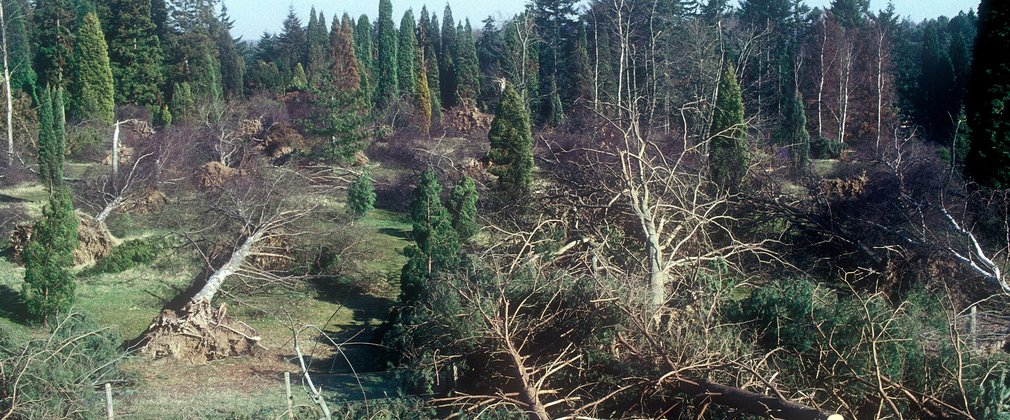History
In the 1600’s missionaries and traders sent trees home as curios. Two notable examples are the Swamp Cypress (Taxodium distichum) which was collected in 1640 by John Tradescant, and Red Maple (Acer rubrum) by his son in 1656. Both of these species have grown well in our temperate climate, and fine examples can be found at Bedgebury. Bedgebury’s oldest trees are the English Oaks (Quercus robur) dating back around 400 years. These formed part of the forests that were cleared and replanted for the previous owners, the Beresford family.
The Beresford family were responsible for a large part of the landscaping, including Marshal’s Lake and planting recently introduced exotic trees. Some of these trees remain and provide a backbone to Bedgebury’s botanical collection, including an impressive unique avenue of Lawson Cypress, named Lady Mildred’s Carriage Drive. Adverse weather such as the 1987 Great Storm and age have taken trees including the Old Man of Kent, a 50m tall Grand Fir (Abies Grandis). This has made it possible to open up large areas where rare conifers can be planted in large numbers for conservation, which is not happening anywhere else in the world.
Royal Botanic Gardens Kew conifers seek country home
Bedgebury Pinetum as we know it today is the result of a partnership between the Forestry Commission and the Royal Botanic Gardens, Kew. After years of increasing industrial pollution Kew staff went in search of a better environment to start a new conifer collection. Bedgebury appeared ideal with its undulating topography, mixture of soil types and water. The first plantings took place in 1925.
The aims of the botanical collection were:
- To grow all the cone-bearing trees from the world’s temperate climates
- To plant conifers to enable close scientific study
- To establish a testing ground for new species and explore their future uses
These goals are still core and have developed to include:
- A showcase for the horticultural use of conifer cultivars (cultivated varieties or plants grown for the garden)
- A gene bank of rare and endangered species
The first Curator, an employee of Kew, William Dallimore undertook the management of the collection. Dallimore sourced trees and shrubs from the Kew nursery and other respected suppliers such as Hillier’s. Many of these plants were grown from seed collected by the great plant hunters of the era, including Ernest Wilson and George Forrest. Dallimore chose suitable planting sites and supervised the plantings by Forestry Commission staff. He kept copious and detailed ledgers, diaries and maps which are still held at Bedgebury.
To aid scientific study, Dallimore laid the collection out with the same types of trees (pines, junipers etc) grouped together. This ‘taxonomic’planting was popular within botanic gardens at that time. Today, we often plant to link species that naturally grow together, or in groups from similar geographical regions. We always try to create a landscape that visitors can enjoy throughout the year. 1987 was an important year in the Pinetum, with the Great Storm removing many trees. The devastation had a positive impact in the long term, making room for lots of new planting and especially for rare conifers collected during Bedgebury’s involvement in conservation around the world. However the taxonomic collections are still present and Dallimore’s eye for landscape is very apparent. Vistas down Hill’s Avenue and Dallimore Valley are a highlight of any visit.
Our formal partnership with Kew ended in 1965, when their activities moved to Wakehurst Place. However we still work together very closely to this day.

